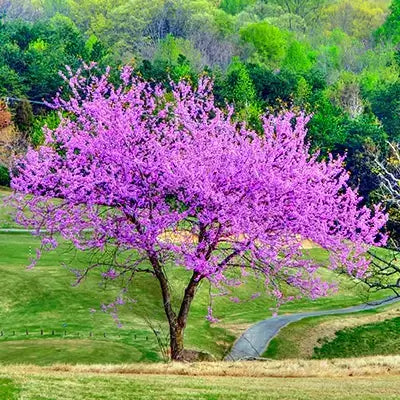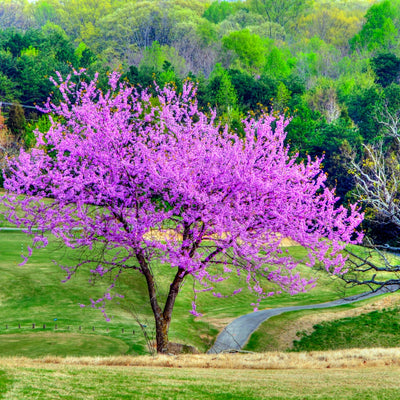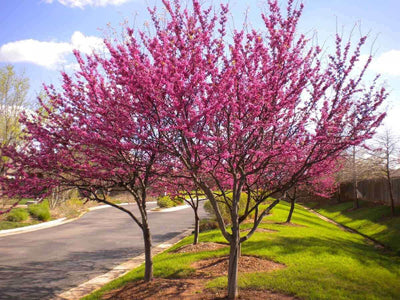The redbud tree may be the perfect option if you’re looking for a unique and exciting tree that adds character and beauty to your home. These trees can make beautiful additions to your property because of their stunning appearance and ability to thrive in almost any environment.

Redbud trees are native to North America, specifically from Ontario to New Hampshire. They are medium-sized deciduous trees with slender leaves that are yellow-green in spring, turning lime green in summer, scarlet in fall, and yellow-orange before they drop off in winter.
What’s so great about red bud trees?
Redbud trees are beautiful and colorful additions to your home garden. They also resist pests and diseases, requiring less maintenance than other trees. These trees also resist drought so that they will thrive in dry soil. Redbud trees have lovely, delicate flowers that attract bees and other pollinators, contributing to biodiversity when planted in your garden. Plus, they have a sweet scent that is sure to please.
Why grow a redbud tree?
There are many reasons why red bud trees make great additions to your home garden:
-Redbud trees thrive in various soil types, making them easy to plant even with poor soil. They also tolerate various temperatures and are open regarding rainfall amounts.
-Redbud trees are short and broad; hence they only require a little space when planted in your garden.
-These trees produce a lot of wood and are easy to prune; hence they are great for firewood.
Care and maintenance
If you decide to plant a redbud tree at home, you will want to give it the attention it needs to thrive and produce beautiful flowers and fruit. The following steps will help your tree grow strong and healthy.
- Choose a location that is sunny and moist. Although these trees can grow in many different soil types, they prefer moist soil rich in organic materials.
- Plant your tree during the fall or early spring when the ground is still excellent.
- Water your tree as needed to keep the soil moist but not soggy.
- Fertilize your tree with a balanced fertilizer once a year in early spring.
- Prune your tree in the winter to shape it and remove diseased or damaged wood.
A redbud tree is an excellent option if you’re looking for a beautiful tree that needs very little attention and will attract pollinators and other wildlife to your home garden. They are also offered at low prices and can be shipped nationwide.



